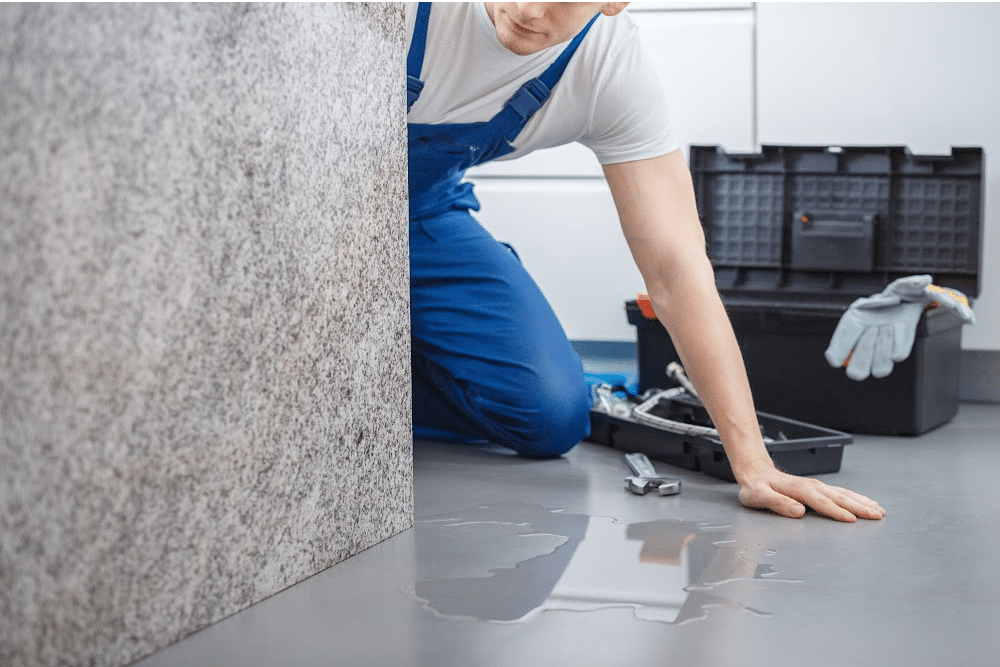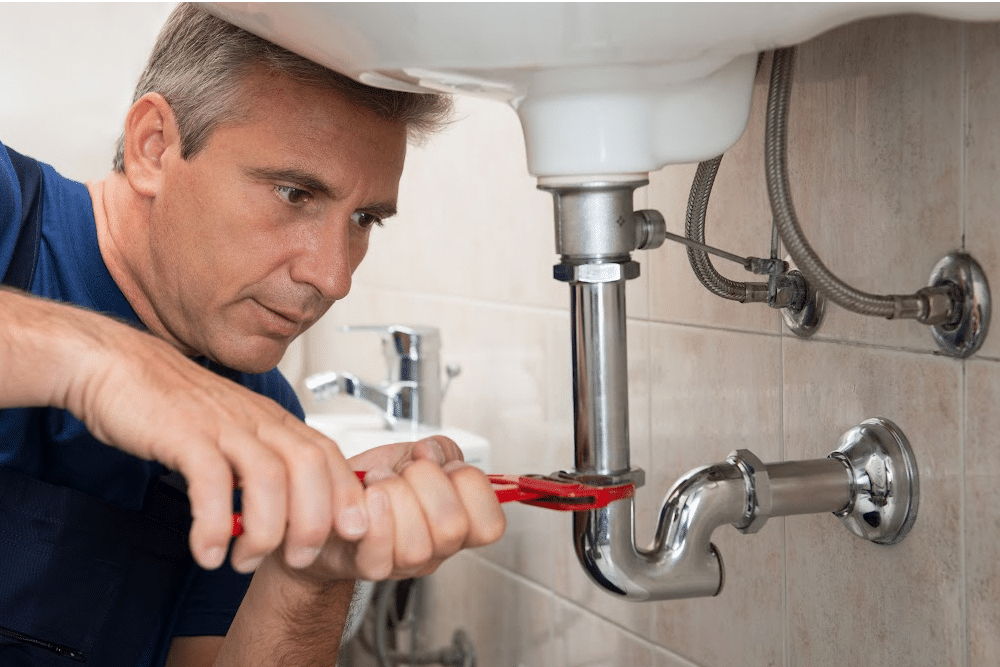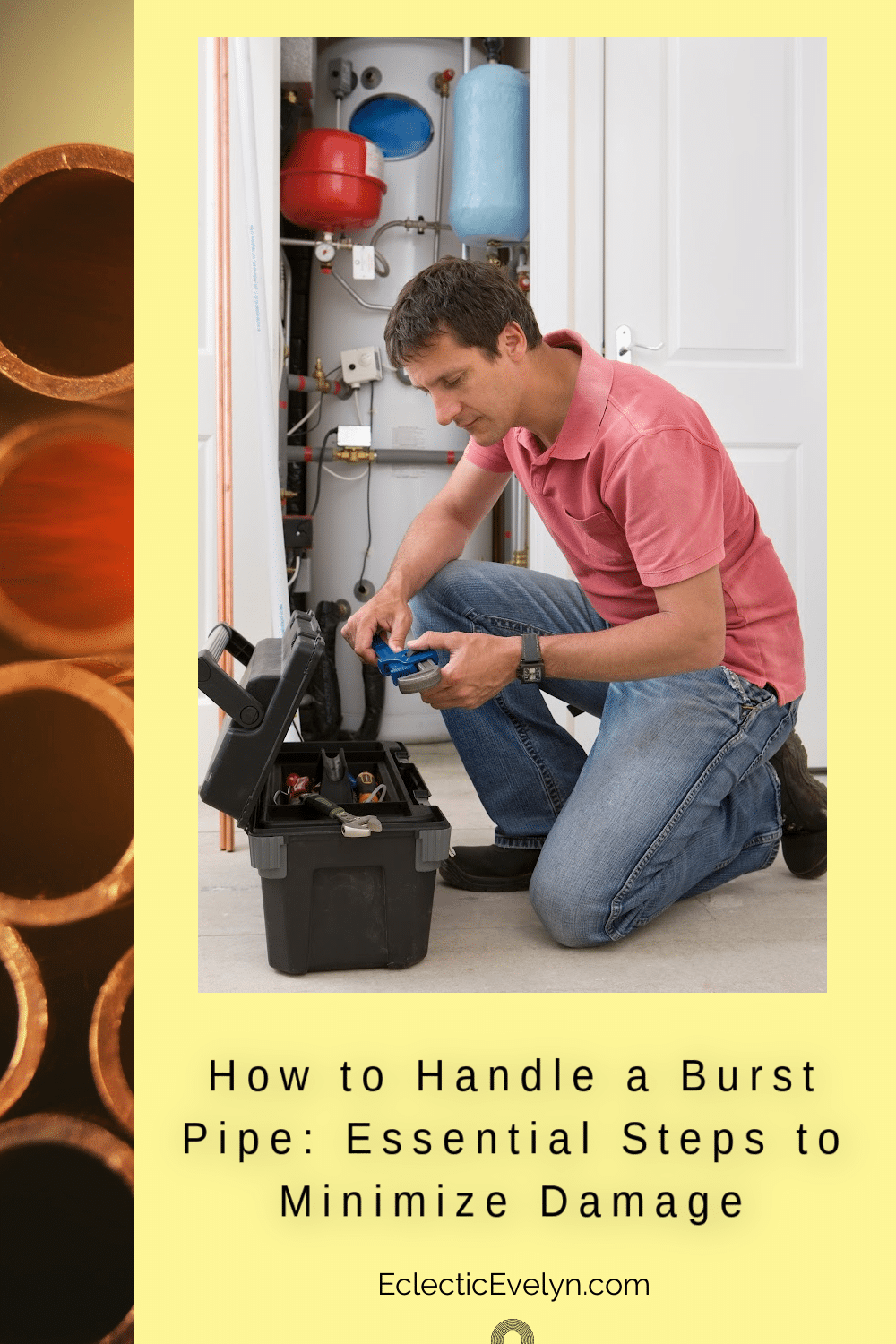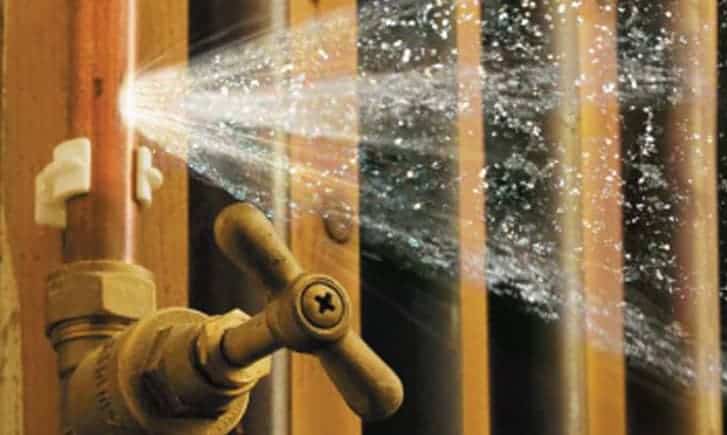Maintaining a home can often feel overwhelming, and it’s easy to overlook routine upkeep. However, unexpected issues like a burst pipe can cause significant damage if not addressed promptly. This guide outlines the crucial steps you need to take when faced with a burst pipe, helping you minimize damage and ensure your home stays safe.
Turn Off the Water Supply Immediately to Prevent Damage
The first step in dealing with a burst pipe is to turn off the water supply immediately. Locate your main water shutoff valve, which is typically found in the basement, crawl space, or near the water meter. Shutting off the water will prevent further flooding and reduce the risk of water damage to your home.
How to Locate the Main Water Shutoff Valve
Knowing where your main water shutoff valve is before an emergency occurs is crucial. Typically, it’s located where the water main enters your house. In colder climates, it’s usually in the basement or a crawl space. In warmer climates, it might be outside, near the water meter. Familiarize yourself with its location and ensure it’s easily accessible.
Why Shutting Off the Water Supply is Critical
Turning off the water supply stops the flow of water and helps contain the damage. A burst pipe can release gallons of water in minutes, soaking everything in its path and causing significant damage to flooring, walls, and personal belongings. Immediate action can save thousands of dollars in repairs.
Cut Off the Electricity to Avoid Hazards
Water and electricity are a dangerous combination. To ensure safety, turn off the electricity in the affected area. Find your home’s electrical panel and switch off the breakers for the rooms impacted by the burst pipe. If water has reached electrical outlets or appliances, it’s best to avoid any contact and call a professional electrician.
The Dangers of Water-Electricity Interaction
When water comes into contact with electrical systems, it can create a hazardous environment. Electrocution risks are high, and even a small amount of water can cause short circuits, leading to potential fires. Prioritizing safety by cutting off electricity can prevent these severe risks.
Drain the Remaining Water from the Burst Pipe
Once the water supply is turned off, open all your faucets to drain the remaining water in the pipes. This helps reduce pressure and prevents additional leaks. Don’t forget to flush the toilets to clear out any water in the tanks and bowls.
Why Draining the System is Necessary
Draining the water system reduces pressure in the pipes, which can prevent further bursts or leaks. It also helps clear out any residual water that might still be trapped, ensuring that when repairs are made, the system is dry and safe to work on.
Mop Up the Mess After a Burst Pipe
After securing the area, it’s time to clean up the water. Use mops, towels, or a wet/dry vacuum to remove as much water as possible. Standing water can cause structural damage and promote mold growth. In the case of a burst sewer pipe the water can also carry harmful disease, so it’s crucial to act quickly. Ensure the area is thoroughly dried, and use fans or dehumidifiers to expedite the process.
Tools and Techniques for Effective Cleanup
Using the right tools can make cleanup more efficient. Wet/dry vacuums are particularly effective for large volumes of water. For smaller areas, absorbent towels and mops will do the job. After removing the water, set up fans and dehumidifiers to dry out the area completely. This step is critical to prevent mold and mildew growth.

Inspect for Additional Damage Caused by a Burst Pipe
Once the immediate mess is cleaned up, inspect your home for further damage. Check walls, ceilings, and floors near the burst pipe for signs of water damage. Look for warping, stains, or bubbling paint, as these can indicate moisture penetration that needs to be addressed.
Identifying Signs of Water Damage
Water damage can be subtle or obvious. Besides visible water, look for discoloration in paint or wallpaper, a musty smell, or soft spots in drywall. Early detection of water damage can prevent more severe structural issues and health hazards like mold.
Call a Professional Plumber for Repairs
Handling a burst pipe often requires professional assistance. Contact a licensed plumber to repair or replace the damaged pipe.If it is a result of an issue with your hot water tank then contact an emergency water heater repair specialist. If you have an emergency fund, this can help cover the costs of urgent repairs without causing financial strain. Be sure to get a detailed estimate and understand the scope of work before proceeding.
Choosing the Right Plumber for a Burst Pipe
When selecting a plumber, check for proper licensing and insurance. Look for reviews and ask for references. A reputable plumber will provide a detailed quote and explain the necessary repairs. Getting multiple quotes can help you choose the best service at a reasonable price.

Prevent Future Burst Pipes
After addressing the immediate crisis, take steps to prevent future pipe bursts. Insulate your pipes, especially those in unheated areas like basements or attics, to protect them from freezing. Regularly check for leaks and fix them promptly to avoid pressure buildup. Consider installing a leak detection system for added security.
Insulating Your Pipes to Prevent Burst Pipes
Pipe insulation is a cost-effective way to prevent pipes from freezing. Foam pipe insulation is easy to install and provides an effective barrier against cold temperatures. In addition to insulation, keeping your home adequately heated during cold weather can prevent pipes from freezing.
Installing Leak Detection Systems
Leak detection systems can alert you to potential leaks before they become major problems. These systems can be installed at critical points in your plumbing and will notify you if they detect unusual water flow. Some advanced systems can even shut off the water supply automatically.
Address Structural Damage from the Burst Pipe
If the burst pipe caused significant flooding, you might need to address structural damage. Contact a professional contractor to assess and repair any damage to your home’s foundation, walls, or floors. Ignoring structural issues can lead to more severe problems down the line.
When to Call a Structural Engineer
Significant water damage can compromise the structural integrity of your home. If you notice cracks in the foundation, sagging floors, or warped walls, it’s time to call a structural engineer. They can assess the extent of the damage and recommend appropriate repairs.
Handle Insurance Claims for Burst Pipe Incidents
Document the damage with photos and detailed notes before starting any cleanup or repairs. Contact your homeowner’s insurance provider to file a claim. Be prepared to provide documentation and receipts for any repairs made. A well-documented claim can help you get reimbursed for the costs incurred.
Navigating the Insurance Process for Burst Pipe Damage
Filing an insurance claim can be daunting, but thorough documentation helps. Take clear, dated photos of all damage. Keep receipts and records of any repair work. Communicate clearly with your insurance adjuster, providing all requested information promptly to ensure a smooth claim process.
Check for Mold Growth
Moisture from a burst pipe can lead to mold growth, which poses health risks. After ensuring all areas are dry, inspect for mold. If you find any, contact a mold remediation specialist to safely remove it. Preventing mold growth is crucial for maintaining a healthy living environment.
Health Risks of Mold from Burst Pipes
Mold can cause various health issues, including respiratory problems, allergies, and skin irritation. Certain types of mold, like black mold, can be particularly harmful. Ensuring your home is mold-free after a burst pipe is essential for the health and safety of your household.
Regular Maintenance to Prevent Burst Pipes
To avoid future plumbing issues, establish a routine maintenance schedule. Regularly inspect pipes, faucets, and appliances for signs of wear or leaks. Address small issues promptly to prevent them from becoming major problems. Regular maintenance can help you catch potential issues early and keep your home in good condition.
Creating a Maintenance Checklist to Prevent Future Burst Pipes
A maintenance checklist can help you stay on top of routine inspections and repairs. Include tasks like checking for leaks, inspecting insulation, and testing your home’s water pressure. Regular maintenance not only prevents emergencies but also extends the lifespan of your plumbing system.

By following these steps, you can effectively manage a burst pipe and minimize damage to your home. Remember, acting quickly and calmly is key to preventing further issues. With proper maintenance and preparedness, you can protect your home from future plumbing emergencies.





